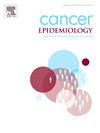Identification of non-virologic risk factors for lymphoma after the first year of kidney transplant in adults: A retrospective analysis
IF 2.3
3区 医学
Q3 ONCOLOGY
引用次数: 0
Abstract
Background
Non-virologic risk factors for lymphoma after the first kidney transplant (KT) year or late-onset post-transplant lymphoma (PTL) have been scarcely studied.
Methods
This secondary study re-analyzed de-identified, non-coded data. Cause-specific Cox regressions analyzed associations between non-virologic risk factors and lymphoma or all-cause mortality among kidney transplant recipients (KTRs) with conditional cancer-free survival one year after KT.
Results
Among 166,256 adult KTRs, factors with the strongest risks for late-onset PTL were recipient age > /= 65 and 50–64 years (HR = 2.38, 95 % CI = 2.25–2.77, HR = 1.77, 95 % CI= 1.58–1.79; respectively) and pretransplant cancer history (HR = 1.46, 95 % CI = 1.21–1.77). Other risk factors for late-onset PTL included alemtuzumab induction, other primary kidney disease, a prior KT, male KTR sex, expanded criteria (ECD) transplant, and acute rejection. Factors associated with a decreased risk of late-onset PTL, albeit with an increased mortality risk, included native diabetic renal disease, pre-transplant dialysis > 2 years, and steroids or proliferation signal inhibitors maintenance immunosuppressant.
Conclusion
Non-virologic risk factors including KTRs advanced age or male sex, prior cancer or KT, alemtuzumab induction, ECD transplant, and acute rejection are associated with PTL beyond the first post-KT year.
成人肾移植一年后淋巴瘤非病毒学危险因素的鉴定:回顾性分析
研究背景:肾移植后第1年或移植后迟发性淋巴瘤(PTL)的非病毒学危险因素研究很少。方法本二次研究重新分析去识别、非编码数据。病因特异性Cox回归分析了非病毒学危险因素与KT后1年有条件无癌生存的肾移植受者(KTRs)淋巴瘤或全因死亡率之间的关系。结果166256例成人ktr患者中,发生迟发性PTL的高危因素为年龄>; /= 65岁和50-64岁(HR = 2.38, 95 % CI= 2.25-2.77, HR = 1.77, 95 % CI= 1.58-1.79;(HR = 1.46, 95 % CI = 1.21-1.77)。迟发性PTL的其他危险因素包括阿仑单抗诱导、其他原发性肾脏疾病、既往KT、男性KTR性别、扩大标准(ECD)移植和急性排斥反应。与迟发性PTL风险降低相关的因素包括先天性糖尿病肾病、移植前透析( 2年)和类固醇或增殖信号抑制剂维持免疫抑制剂。结论ktr患者的高龄或男性、既往癌症或KT、阿仑单抗诱导、ECD移植和急性排斥反应等非病毒学危险因素与KT后1年以上PTL相关。
本文章由计算机程序翻译,如有差异,请以英文原文为准。
求助全文
约1分钟内获得全文
求助全文
来源期刊

Cancer Epidemiology
医学-肿瘤学
CiteScore
4.50
自引率
3.80%
发文量
200
审稿时长
39 days
期刊介绍:
Cancer Epidemiology is dedicated to increasing understanding about cancer causes, prevention and control. The scope of the journal embraces all aspects of cancer epidemiology including:
• Descriptive epidemiology
• Studies of risk factors for disease initiation, development and prognosis
• Screening and early detection
• Prevention and control
• Methodological issues
The journal publishes original research articles (full length and short reports), systematic reviews and meta-analyses, editorials, commentaries and letters to the editor commenting on previously published research.
 求助内容:
求助内容: 应助结果提醒方式:
应助结果提醒方式:


